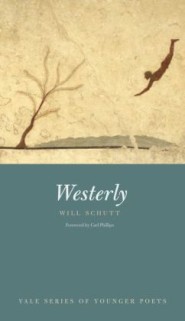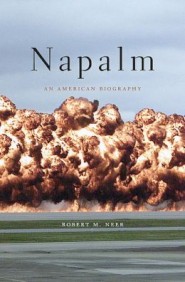
Amity & Sorrow by Peggy Riley (Little, Brown) - Playwright Riley’s debut novel is a harsh but compassionate look at nature vs. nurture through the lens of a polygamous cult. Sisters Amity and Sorrow were born and raised by their mother, Amaranth, the first of the 50 wives of a self-proclaimed prophet, the leader—“preacher, father, husband”—of a doomsday sect. When a confrontation with the law results in a fire, Amaranth grabs her teenage daughters, steals a car, and drives for four days until, exhausted, she crashes near a gas station in rural Oklahoma. Read Riley's essay on the American cult.

Julio’s Day by Gilbert Hernandez (Fantagraphics) - Julio’s Day is the 100-year story in 100 pages of a 100-year-old man living in a small, mostly Mexican town in the American Southwest, from his first to last breaths, 1900 to 2000. A marvelous and tightly scripted epic whose last page is a heart-stopper.

The Selected Letters of Willa Cather edited by Andrew Jewell and Janis Stout (Knopf) - By all rights, this excellent volume of Willa Cather’s letters should not be: in her will, the celebrated American writer specified that none of her correspondence was to be published, ever. Fortunately for general readers and scholars alike, that demand has not been heeded. The letters in this collection have been gathered from the 3,000 that survive in nearly 75 archives across the country.

The Ingenious Gentleman and Poet Federico Garcia Lorca Ascends to Hell by Carlos Rojas, trans. from the Spanish by Edith Grossman (Yale Univ.) - Rojas reinvigorates the martyred Spanish poet from the inside. Lorca, murdered in 1936 by Francoist rebels, narrates his own postmortem odyssey in energetic prose, full of vivid imagery and provocative discussion. Within the pages of this exceptional book, you’ll find encounters with Ulysses and Achilles, “Al Capone’s charity soup,” and a ghost café.

Westerly by Will Schutt (Yale Univ.) - The latest winner of the venerable Yale Younger Poets Prize turns out to be terse, well-traveled, resolutely unfashionable, and, finally, wise. Westerly is a town in Rhode Island, “where nirvana is a long time/ coming... the way stupid hope won’t shut up”; it’s also a direction for American history, for personal migration (“you find yourself relieved/ your world is set in the Midwest// and facts belong to this poem”), for the roaming imagination, where “Not everyone who dreams dreams the beach.”

Tomorrow There Will Be Apricots by Jessica Soffer (Houghton Mifflin Harcourt) - Eighth-grader Lorca has been self-harming since she was six years old, lately to deal with pain she feels due to her distant mother, who’s more focused on her demanding job as a chef, and her absent father. When she is caught cutting at school, she is suspended and her mother threatens to send her to boarding school. Lorca becomes convinced she can win her mother’s affections and forgiveness by making a favorite dish, masgouf, which her mother ate at an Iraqi restaurant years before. Soffer picks the 10 best endings in books.

My Beloved Brontosaurus: On the Road with Old Bones, New Science, and Our Favorite Dinosaurs by Brian Switek (Scientific American/FSG) - In this revealing work of pop paleontology, Switek (Written in Stone) travels across America to visit dinosaur fossils, but don't let the subtitle and descriptions of stunning scenery and trips down gravel roads mislead you—this isn't really a travelogue: each stop serves as but a jumping-off point for an examination of our changing understanding of dinosaurs. Check out a Q&A with Switek.

The Carrion Birds by Urban Waite (Morrow) - Waite follows his acclaimed first novel, 2011’s The Terror of Living, with another searing western noir. Three people face terrifying moral choices as they each wish for what they can’t have: life as it was before their small border town of Coronado, N.Mex., was doomed by its dying oil economy and the arrival of a Mexican drug cartel.

Life After Life by Kate Atkinson (Little, Brown) - Atkinson’s new novel opens twice: first in Germany in 1930 with an English woman taking a shot at Hitler, then in England in 1910 when a baby arrives, stillborn. And then it opens again: still in 1910, still in England, but this time the baby lives. That baby is Ursula Todd, and as she grows up, she dies and lives repeatedly. Atkinson talks about the making of a heroine with PW.

Candlemoth by R.J. Ellory (Overlook) - Ellory’s searing first novel recounts how Daniel Ford came to be on death row in 1982 for beheading his best friend, Nathan Verney, a decade earlier. The question of Ford’s guilt lends plenty of interest, but is almost incidental to the harrowing descriptions of life behind bars and the complex unfolding of a lifelong connection between friends. Check out our interview with Ellory.

The Flamethrowers by Rachel Kushner (Scribner) - This rich novel from Kushner takes place in late-’70s New York City and Italy. Reno is a young filmmaker “shopping for experiences,” who, as the novel opens, is attempting to set a land-speed record on her Moto Valera motorcycle in Nevada, only to crash instead. A flashback to New York finds her mixing with a group of artists, among whom she meets Sandro Valera, whose wealthy family manufactures the Moto Valera.

Woke Up Lonely by Fiona Maazel (Graywolf) - Maazel’s sprawling and ambitious new novel follows the rise and fall of the Helix, a cult of the lonely who believe that true human connection can only arrive with full disclosure. Think Facebook and Twitter but without the pesky computers. Speed dates, rallies, and confession sessions abound, full of strangers accosting one another to divulge their deepest secrets and most closely held fears, all in the hope of stemming the overwhelming tide of loneliness that is modern existence.

Napalm: An American Biography by Robert M. Neer (Harvard Univ.) - In this engrossing study, historian Neer recounts the prodigious youth and reviled old age of an iconic weapon. He follows the career of napalm—an incendiary jellied gasoline that sticks to everything and is almost inextinguishable—from its clever design by idealistic Harvard chemists during WWII, a time when any contrivance in the furtherance of victory seemed justified. (Experiments with napalm-armed bats fizzled after the critters escaped and burned down an army base.) The results, Neer shows, were both potent and horrific.

All That Is by James Salter (Knopf) – Salter’s first novel in over 30 years spanning some 40 years and following the accidental life, career, and loves of book editor Philip Bowman. After serving in the Pacific during WWII, Bowman stumbles into publishing at a time when small houses reigned. During extravagant literary parties and travels through Europe, Bowman shares his thoughts on authors both real and imagined. And yet his career is merely a vehicle for his loves and losses, connections made and missed. Check out our talk with Salter.

The Dark by Lemony Snicket, illus. by Jon Klassen (Little, Brown) – The two bestselling children’s authors are an inspired pairing in this suspenseful take on childhood fear. Laszlo, a solemn boy in blue pajamas, is scared of the dark, and it’s easy to see why. He lives in a house with “a creaky roof, smooth, cold windows, and several sets of stairs.”

My Bright Abyss: Meditation of a Modern Believer by Christian Wiman (FSG) - Wiman offers urgent thoughts on faith and doubt from the foxhole of mortality. Not that many years ago, the poet and editor of Poetry magazine was diagnosed with a rare cancer. This book of essays springboards from a much talked about 2007 essay that laid out his condition, his dark night of the soul, and his reawakening faith. Read our interview with Wiman.
All book pictures and descriptions found at publishersweekly.com
No comments:
Post a Comment